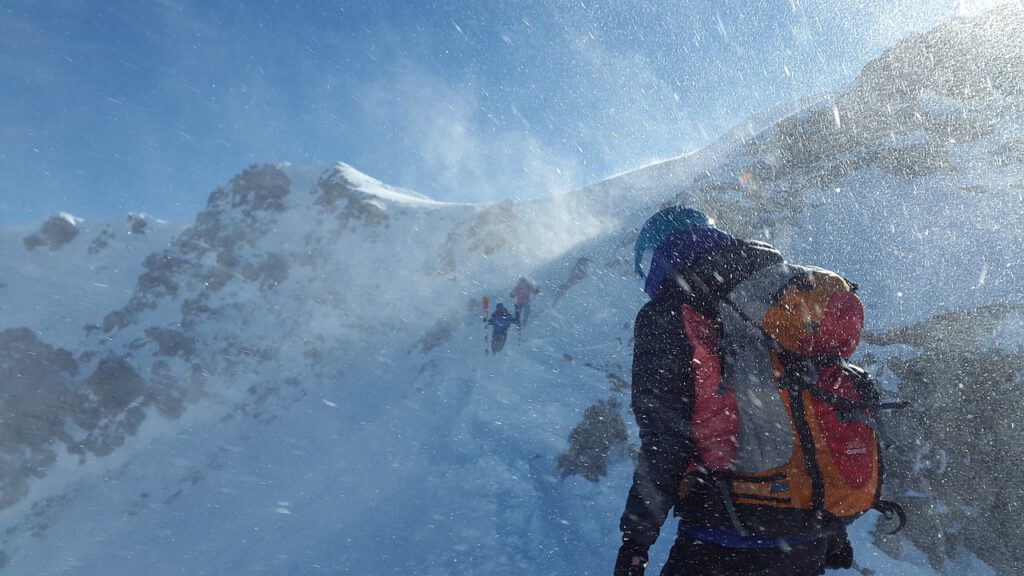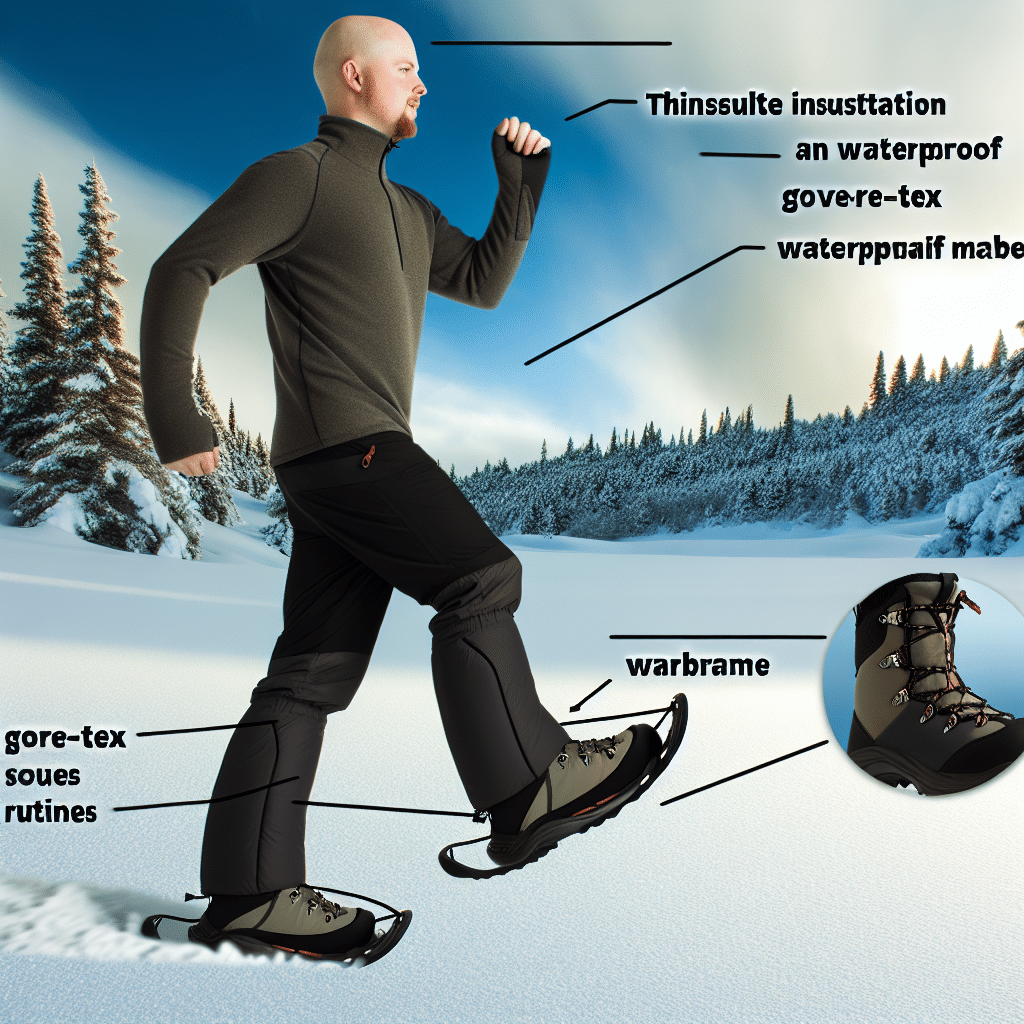An ice pick is a tool with which one can climb up an ice covered surface like a frozen waterfall or a vertical icicle. The climber hammers the spike of the pick into the ice and thus creates steps from where he can proceed upwards. This way it is possible to overcome obstacles, which would be impossible to surmount otherwise, e.g. to get up a frozen waterfall or vertical icicle.

Ice pick climbing is usually done on mountain ice, but also in caves or indoor ice halls the technique can be used. The simplest form of this sport is dry tooling , which means that the climbers use special tools similar to an ice ax besides their hands and feet for ascending.
The tools are called ice axes , but they are not the same as the mountaineers’ ice axes. Ice axes for dry tooling have a sharper hook shaped pick, which is fixed to the handle with screws or adhesive tape. When hammering in this tool it is important that no part of your hand can get under the pick (e.g. by wearing gloves). The handle is usually equipped with a wrist loop to make sure the tool doesn’t slip out of your hand when hammering it into the ice.
The shafts of these axes are made from aluminum or carbon fiber tubes, which makes them pretty light weight. This way they can be used like normal ice axes to arrest a fall. At the same time they are narrow enough, so that one can place them in small cracks between rocks or ice.
The points of the axes are mounted with different sorts of picks : adze , hammer and knife . A screw plate serves as an additional hold for the toes at some tools. The exact design varies depending on the manufacturer.
The upcoming ice climbing season is just about to get underway and we were able to test some different tools from various manufacturers during this “off-season”, which means: in summer! It was interesting to test them on toprope, because it simulates dry tooling a bit more than if we had tested them outside while it was cold. But what would you rather do in the heat of the summer: climbing with ice axes outside or toproping inside?
Right now it’s still warm in most parts of Europe, which means that it is necessary to train indoors. So we thought about testing some ice axes and using them for dry tooling. These tools are different from classical ice axes, because they have a sharp pick and are used for climbing up a fixed rope.
At the same time we tested some classic ice axes by Grivel, which were also equipped with a hammer and adze pick. The shaft is made from an alloy of aluminum to make them light weight. For the lower end they have a spike, which is used for self arrest in case of a fall or to anchor into the ice. In summer it doesn’t really freeze that hard yet, so we couldn’t test them on real ice.
What you usually do in dry tooling is use your tools like normal ice axes, i.e., with a good stance and placing your hands and feet in the right places you can climb up almost anything. This way of climbing is sometimes called “plaquette” style, because French climbers are usually the ones who practice this sport with ice axes. The use of an ice pick makes it possible to climb on small holds that would be impossible to grip with bare hands. These tools are similar to ice axes, but they have a sharp pick for climbing up the ice. The design of the shaft also varies; some are wide like classical axes, others are more slim and light weight.
The picks at dry tooling tools can either be straight or curved like an ice-axe , which provides even better grip when hooking into the ice. The shape of the pick also varies depending on the manufacturer, but besides that they are all pretty similar.
The other way to use these tools is to hold them in front of you like a dagger and climb up cracks or steep overhangs. “Crack climbing” might be the most obvious way of using dry tooling tools, but you can also climb classical mixed routes with them.
While dry tooling on toprope you have to pay attention that your pick does not slip out of the ice, because it could be quite painful. On real ice this is less of a problem, though. The best way to train for dry tooling is probably climbing on real ice, because it is much harder and you have to take care of not slicing your hands open when placing the pick.
Which ice pick climbing manufacturer is the best?
There are a few manufacturers that offer tools for crack climbing and dry tooling: Black Diamond, Petzl, Grivel and Clauf. Most of them come in different sizes, so it depends on your height and weight which size you will choose. We tested the biggest tools, which are mostly meant for taller people with bigger hands.
The tools by Black Diamond and Clauf have a real shaft that is similar to traditional ice axes. Grivel uses their “plasma” material, so it is thinner than other materials, but still very light weight. The “plasma” design also means that they can vary in length.
The ice pick has a sharp pick and 2, 2.5 or 3 mm steel edges depending on the size of the tool. Apart from that it is mostly just an aluminum shaft, which makes these tools light weight and easy to handle. We tested all 4 different sizes and compared them to each other.
The tools by Clauf and Black Diamond have a similar design because they look like an ice-axe , except for the curvature of the shaft, which is much more flat than classical axes. The rubber handle makes it easy to hold these tools in any orientation without slipping out of your hand. It also makes it harder to break the shaft, because the rubber absorbs some of the forces. This way of holding them is suited for crack climbing and mixed routes . Grivel’s “plasma” tools are longer than the other ones. They have a similar construction as classic ice axes with an aluminum shaft and rubber handle, but they also differ greatly in size.
There are 2 different sizes that vary in length and weight. The difference between the smaller one (90 cm) and the bigger one (115 cm) is about 10 cm in height, which makes the handle half a meter higher than usual. You can use this tool either with or without gloves. If you do not wear any gloves it is easier to place the pick in the ice, but you might hurt your hands.
While crack climbing it is harder to use these tools because of their weight and length. It is easier to hold them with gloves, though. This way they are more suitable for dry tooling than crack climbing.
The picks at all 4 companies have either 2.5 or 3 mm steel edges , which make them pretty similar to each other. They are not sharp enough to puncture your skin while holding them without gloves, but they could still leave some marks on the back of your hands when you fall on them. The Clauf and Black Diamond models do not have pointed pick tips like ice axes, but Grivel’s picks have a sharp tip , which could stab you if you do not pay attention. The Clauf tools have a slightly smaller pick, which is easier to hold in small cracks and slots.
Grivel tests all their tools by dropping them from a height of 1 meter onto a concrete surface. This way they find out if the pick is going to break. All their tools have a metal wedge inside, so they won’t bend easily. This makes them more suitable for dry tooling than crack climbing. The other companies do not use a metal wedge in their picks, but it would be nice if they did because this way you could also fell much safer when using these tools to climb cracks.
Petzl tested their tools by falling with them, too . They hold the pick in place using a piece of rubber that you can see on the picture above. This way the pick does not move up or down, which is nice for dry tooling .
The handle is made out of rubber and covered with nylon tape. The rubber is thicker than the tape and therefore more durable. Grivel uses a 2 mm thick rubber core , while Black Diamond and Clauf use 3 mm and 5 mm, which makes their tools harder to break.
On Clau



